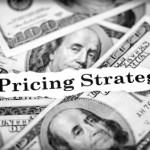Knowing the difference between push and pull marketing strategies is important when considering how to market your new product. If you are not careful in choosing the correct strategy for your product, your budget could take a big hit. When used correctly, your strategy can create consumer demand and effectively increase revenue.
consumer demand and effectively increase revenue.
A push promotional strategy essentially means getting your product in front of customers by whatever means necessary, or “pushing” it on them. The goal here is to ensure a customer remembers your brand. Retail world examples of this strategy in action are trade shows, showrooms, package design, and brand ambassadors handing out samples in the local retail store. The e-commerce equivalents are display ads and email blasts. This is a popular strategy that tends to be very cost effective.
On the other hand, a pull promotional strategy “pulls” customers into a product. This often takes the form of motivating customers with sales, coupons, or promotional giveaways. As a long-term strategy, businesses count on good customer service and a great product to keep customers coming back after the sale or giveaway has ended. Word of mouth referrals are obviously the cheapest form of advertising, so be sure to strive an incredible experience if your business decides to utilize the pull promotional strategy. Oftentimes, customers will pay a little more for better service.
Finally, remember to make it a habit to always ask a customer how they were referred to your business, especially if you are employing both push and pull promotional strategies. Tracking and testing different methods can eventually help you decide the best promotional method for your product or service.


